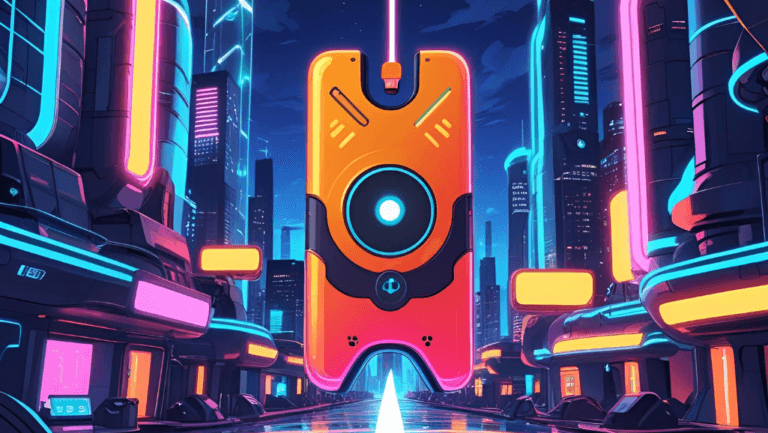Dredge began in Greater Marrow, where a contract fisherman was handed a new boat and pointed toward open waters.
The world shifted over roughly 6–12 hours of play from calm mornings to fog-choked nights. Simple, forgiving fishing minigames moved time forward instead of punishing mistakes, and movement felt intuitive. Later upgrades added risk and speed with a Haste boost that changed how you approached tense moments.
Its story unfolded through chats with townsfolk and bottled notes, creating a slow, eerie pull. The map guided you across five regions where threats rose after dark. Autosaves at ports, plentiful docks, and a sleep system that reset panic kept progress steady without removing tension.
The ocean was a character itself: inviting by day and dangerous by night. Performance was smooth on PS5, with immersive haptics and low‑poly art that amplified mood. The point of this review is simple — help you decide if this compact, atmospheric title blends quiet routine with mounting dread in a way you’ll enjoy.
Key Takeaways
- Short, atmospheric experience that mixed calm fishing with growing tension.
- Accessible fishing systems kept play welcoming but meaningful.
- Narrative unfolded through townspeople and found notes, day by day.
- Five regions and night hazards made exploration feel risky and rewarding.
- Good performance on PS5 and evocative low‑poly visuals enhanced immersion.
Dredge game review at a glance: serene fishing meets eldritch dread
Daylight invites slow fishing and quiet upgrades; night brings pressure, illusions, and risk. The loop is simple: sail the sea, reel in catches, and spend resources to improve your boat. Each trip feels useful because upgrades open new routes and new story beats across five regions.
By day, the world soothes. Gentle waves, clear routes, and regional visuals make exploration relaxing. Systems are accessible for newcomers yet offer depth for players who like smart choices.
When night falls, tension rises. Fog and strange lights warp perception. Threats appear that force you to weigh reward against danger. Lights help, but they can also draw unwanted attention.
- The core loop ties quiet routines to a larger mystery.
- Horror elements act as steady pressure, not cheap jump scares.
- Distinct regions and mini stories keep discovery fresh.
There is also video coverage for some outlets, but the in-game feel—especially on consoles—remains smooth and atmospheric. This section sets up a deeper look at the systems and the night mechanics to follow.
Gameplay and systems: from casting a line to mastering your boat
The core loop here rewards steady choices: cast, catch, pack, and decide whether to push on. That rhythm makes each trip feel meaningful while keeping stress manageable.
Fishing, dredging, and mini-games that keep the line tight
Fishing uses approachable minigames that nudge you toward success. Mistimed pulls usually cost only time, not total failure.
The result is low friction play that still feels tactile. Each catch asks you to read the prompt and react, keeping attention sharp without punishing beginners.
Inventory Tetris: polyomino cargo, spoilage, and smart stowage
The inventory becomes a clever puzzle. Fish shapes, gear, and materials must be packed like polyomino pieces to avoid spoilage and wasted trips.
Making room forces hard choices: sell now, keep rare trophies, or risk hull damage for one more haul.
Gear and equipment: rods, nets, crab pots, and specialized species
Equipment variety matters. Rods, nets, and crab pots complement each other while specialized gear unlocks coastal, oceanic, shallow, and volcanic catches.
Movement and speed: engines, Haste, braking, and navigating rocks
Movement feels intuitive: forward, reverse, and brake on the stick. Upgraded engines and Haste boost speed but raise risk of hull strain.
By day, threading between rocks is forgiving. At night, shifting obstacles and faint lights demand patience and good route planning.
- The systems interlock: catch well, pack smart, and you fund better gear.
- Every choice—where to sail, what to equip, when to sprint—shapes your style.
The horror of the open ocean: night mechanics, panic, and survival
Night pulls the horizon closed, and the familiar sea rearranges itself into threats and riddles. Time matters: as darkness deepens, panic climbs and lanes you traced by day can become deadly. You must watch the clock and choose whether to press on or seek shelter.
Panic in the fog: how time, light, and illusions change the sea
Lights calm nerves but can also act like beacons that lure predators across the open ocean. Illusions warp distances and place unexpected rocks where safe water once lay. Resting or basking in strong light reduces panic, but recovery can lag until you truly relax.
Monsters, aberrations, and damage: protecting your hull after dark
Aberrant creatures, parasitic infestations, and sudden collisions punish sloppy routes. A fragile hull will not forgive a single lapse; upgrades and measured navigation save trips and time. Weather and crows add pressure, turning every choice—slow, detour, or sprint—into a survival judgment.
The horror here is mechanical: threats force adaptation, learning, and respect for the depths. Prepare your ship, mind the elements, and treat night as a test of skill and courage.
- Night escalates panic and shifts familiar routes.
- Lights lower panic but may attract hunters across the sea.
- Shifting rocks and silhouettes demand precise navigation.
- Hull upgrades and disciplined play are vital for survival.
Progression, upgrades, and the economy: meaningful gains with caveats
Each upgrade you pick reshapes how you approach the map and the risks between docks. Research parts unlock stronger rods, better nets, and improved engines, letting you tailor a build that suits exploration or efficiency.
Research branches into clear goals: brighter lights to lower panic, hull plates to survive collisions, and tools that speed up fishing. Hull upgrades often need salvaged planks and materials, so some paths feel linear and a bit grindy.
Money comes mostly from selling catches. The economy tends to favor players: shoals respawn often and universal storage cuts down on running back and forth. Autosaves at the nearest dock and many ports make setbacks easier to accept.
- Research path: pick engines or specialized rod options to open new routes.
- Impact: upgrades are noticeable on the water, even if gathering parts takes a lot of time.
- Economy: generous respawns and storage smooth the loop, reducing friction between trips.
- Playstyle: brighter lights and stronger engines are the quickest way to turn late runs into calm sails.
The system makes things approachable, which builds momentum. That ease can flatten danger for veteran players, but it also keeps progress rewarding and fun. Pick the gear and upgrades that excite you, and plan routes to save time as trips link together.
World, story, and quests: five zones, bottled lore, and branching endings
The archipelago unfolds like a living atlas, each bay offering its own riddles and rewards. The world spans five regions, from welcoming Greater Marrow to the volatile Devil’s Spine. Each zone forces you to change how you sail, fight, and think.
Greater Marrow to Devil’s Spine: distinct biomes and regional puzzles
Cliff corridors rain rocks and hide a one-eyed serpent. A coral reef guards its shoals with a giant tentacled beast.
A foggy jungle maze shifts roots and lanes. The volcanic coast hosts a blind predator that follows its young.
Quests, relics, and aberrant species: a Pokédex for the deep
The main quest asks you to gather relics and decide how the story ends. Multiple endings reward different choices and invite replay.
Aberrant species tempt completionists to return with specialized rods and nets to log rare fish in an encyclopedia.
Performance and platforms: smooth sailing on PS5, PC, Switch, and Xbox
- Regions matter: each area reshapes exploration and puzzles on the map.
- Quests and relics: they give the world purpose and stitch the story together.
- Side goals: aberrant species reward patience and new gear.
- Platforms: stable performance across consoles and PC; PS5 DualSense adds a bit of tactile immersion.
- Time: main path runs about six to a bit more than a dozen hours, depending on how long you linger for fish and secrets.
DLC check-in: The Iron Rig adds fish, upgrades, and corporate menace
A corporate platform moves in and the sea answers with black stains and strange schools of fish. The Iron Rig (Aug 15, 2024) plants a central hub that spreads pollution and births new species in tainted patches. You arrive to research custom rods and pull aberrations from contaminated depths.
Pollution spreads, new species emerge, and the rig demands research
Contaminated patches force you to change tactics. Swap equipment and adjust your gear to match the depths and the threats you find.
Research tasks unlock custom rods that target odd species tied to the slicks. This adds fresh reasons to revisit familiar waters.
Rig upgrades and manufacturing: more ways to boost your build
The rig itself gains departments that unlock manufacturing and facilities. These upgrades let you craft parts, improve your boat, and tailor gear for tougher hauls.
Best played on fresh saves: why late-game boats blunt the danger
“Tension fades if you arrive with an overbuilt ship; start fresh and the rig feels dangerous again.”
- It respects prior progress but rewards early replays.
- Not a sprawling map expansion, yet it adds strong systems.
- Overall, an 8/10 add-on that brings new depths to ride the waves.
Conclusion
A moody voyage awaits: steady daytime fishing rewards curiosity, while nights force careful choices across five distinct zones. This compact review finds the title confident and focused.
The story arrives in notes and quests, and the loop — cast, pack, upgrade — keeps the gameplay tight. Upgrades change your ship and speed, and inventory choices feel satisfying even after hours of play.
Horror here supports tension more than shocks, shaping routes and decisions without breaking the calm. The Iron Rig DLC adds pollution-driven species and rigs best seen on a fresh save.
If mood-first adventures call you, this is a thoughtful way to answer — steady your line, mind the dock, and enjoy each small victory on the sea. Thanks for reading this review.


























